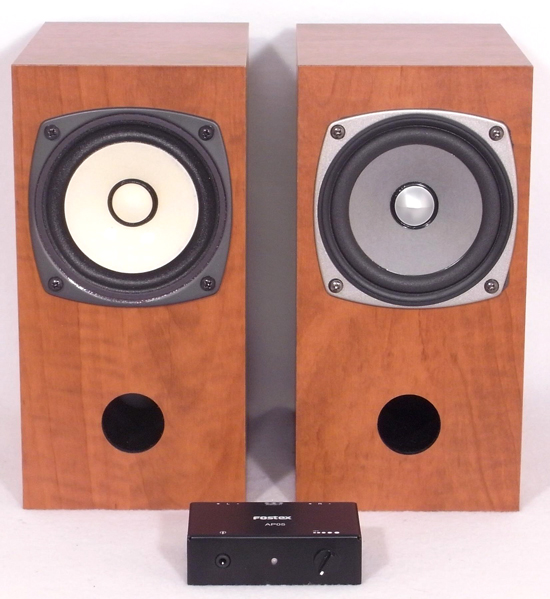

- FOSTEX SPEAKER ENCLOSURE DESIGN DRIVERS
- FOSTEX SPEAKER ENCLOSURE DESIGN DRIVER
- FOSTEX SPEAKER ENCLOSURE DESIGN UPGRADE
- FOSTEX SPEAKER ENCLOSURE DESIGN FULL

FOSTEX SPEAKER ENCLOSURE DESIGN DRIVER
While the descriptions of the mid-range response appears to be inconsistent, I interpreted them to be primarily caused by the particular driver and enclosure combination coupled with a baffle step response problem. The negatives expressed typically concerned a very weak bass and a shouty overly dominant mid-range response. The positives expressed included superior mid-range response and imaging. Reading between the lines, I started to see a couple of consistent trends in some of these reports.
FOSTEX SPEAKER ENCLOSURE DESIGN FULL
Having already built two full range driver systems, I began to very carefully reread the descriptions on the forums of the sound characteristics produced by various Lowther speaker systems. Because of my location, I was not going to be able to sample several different Lowther speaker designs before deciding if this was the right direction for my next DIY speaker project. Lowther speakers appeared to produce a love/hate response from those that had heard the different commonly available enclosures. From the information and opinions I collected on the various forums and dedicated websites, there did not appear to be a consistent picture.
FOSTEX SPEAKER ENCLOSURE DESIGN DRIVERS
These Qts values almost bracket all of the Lowther drivers in any given model line.įor over a year, I read everything I could find on the Internet related to Lowther drivers. Even more important, this speaker was a final proof of concept that made me very comfortable using a driver with a Qts value anywhere in the range between 0.2 and 0.4.

Again, I was pleased with the results I achieved with the less expensive Fostex driver. To try and answer this question, I hedged a little and purchased a pair of Fostex FE-208 Sigma drivers and built a second full range driver project. The question remaining was if a Lowther driver with a stronger magnet was selected, what challenge in the enclosure design would accompany a much lower Qts value. The Fostex FE-164 had a Qts that was near the maximum value for any of the Lowther drivers.
FOSTEX SPEAKER ENCLOSURE DESIGN UPGRADE
The magnet variable represents a degree of freedom, and potential upgrade path, for any proposed enclosure design. The different Lowther models (PMA, PMC, DX, and EX) are available with multiple magnets of increasing strength. I was attracted to Lowther because I liked the idea of a series of drivers in any particular model line. AER was a strong candidate but at the time only one very expensive driver was available. The Supravox drivers had a little too high of a Qts for the quarter wavelength style of enclosures I had in mind. This encouraged me to start looking at the higher end drivers from AER, Lowther, and Supravox. After listening to this speaker system for a number of months, I concluded that real potential existed for full range drivers. I was very pleased with the results and the feedback from a number of DIYer's, having copied the design, has been extremely positive. The ML TQWT represented a very inexpensive experiment to see what was achievable with a full range driver. This project was the ML TQWT speaker that has been really popular on the DIY forums and has been successfully copied many times. I built my first full range driver project using Fostex FE-164 drivers a couple of years ago. Lowther DX Series of Drivers in a ML TL Enclosure Lowther DX Series of Drivers in a ML TL Enclosure


 0 kommentar(er)
0 kommentar(er)
